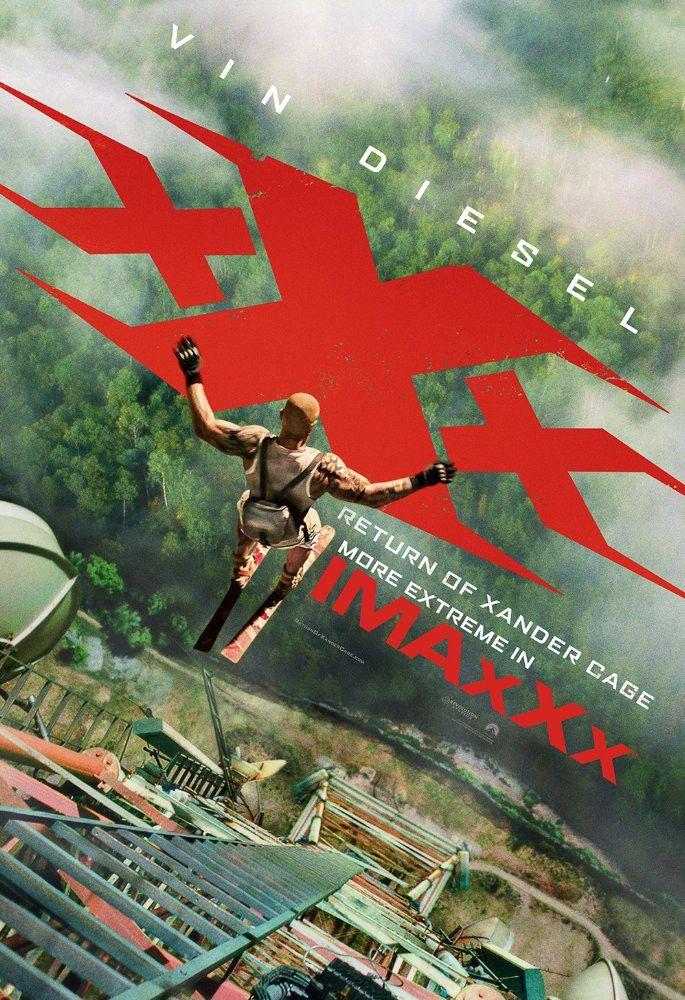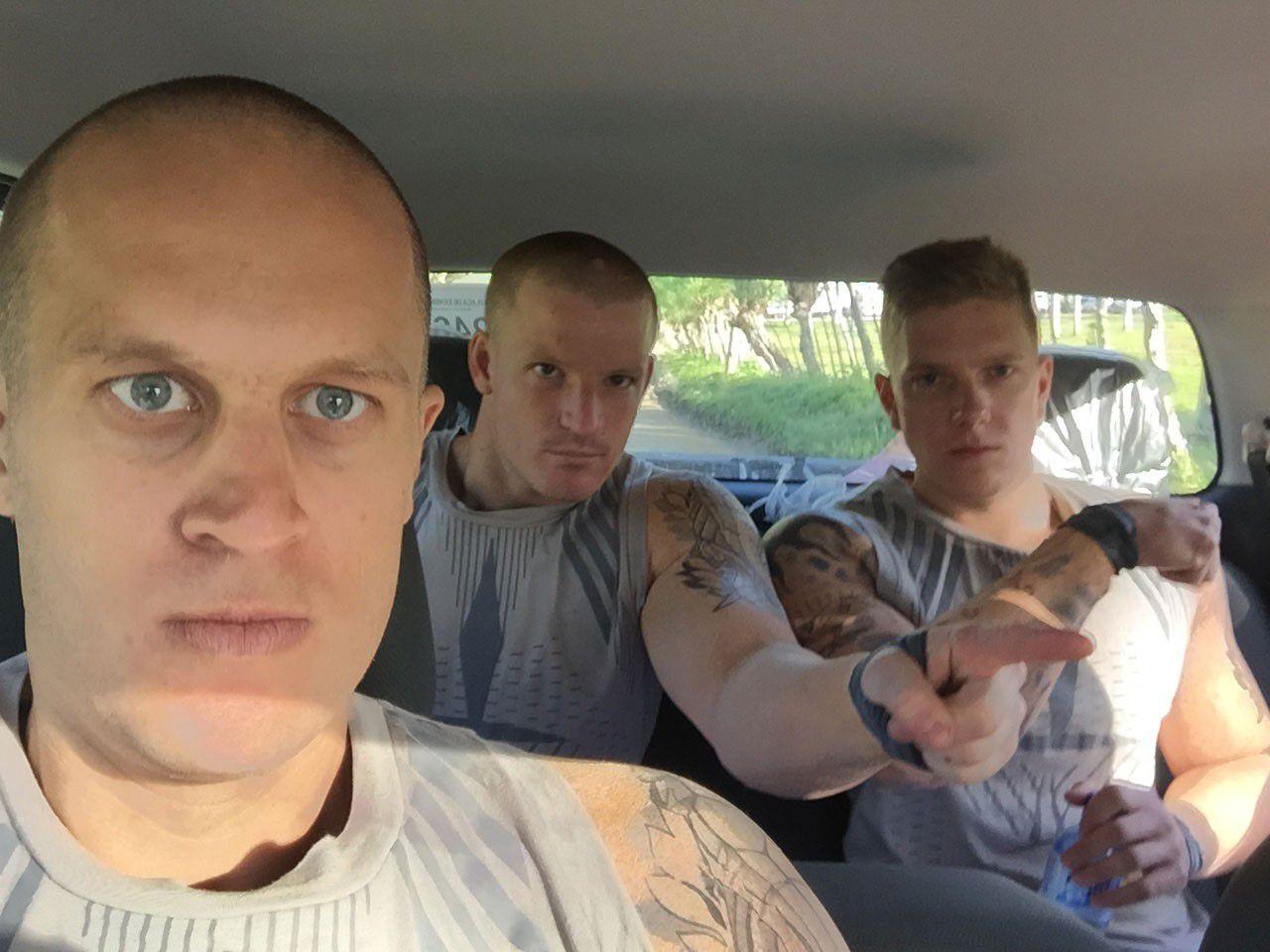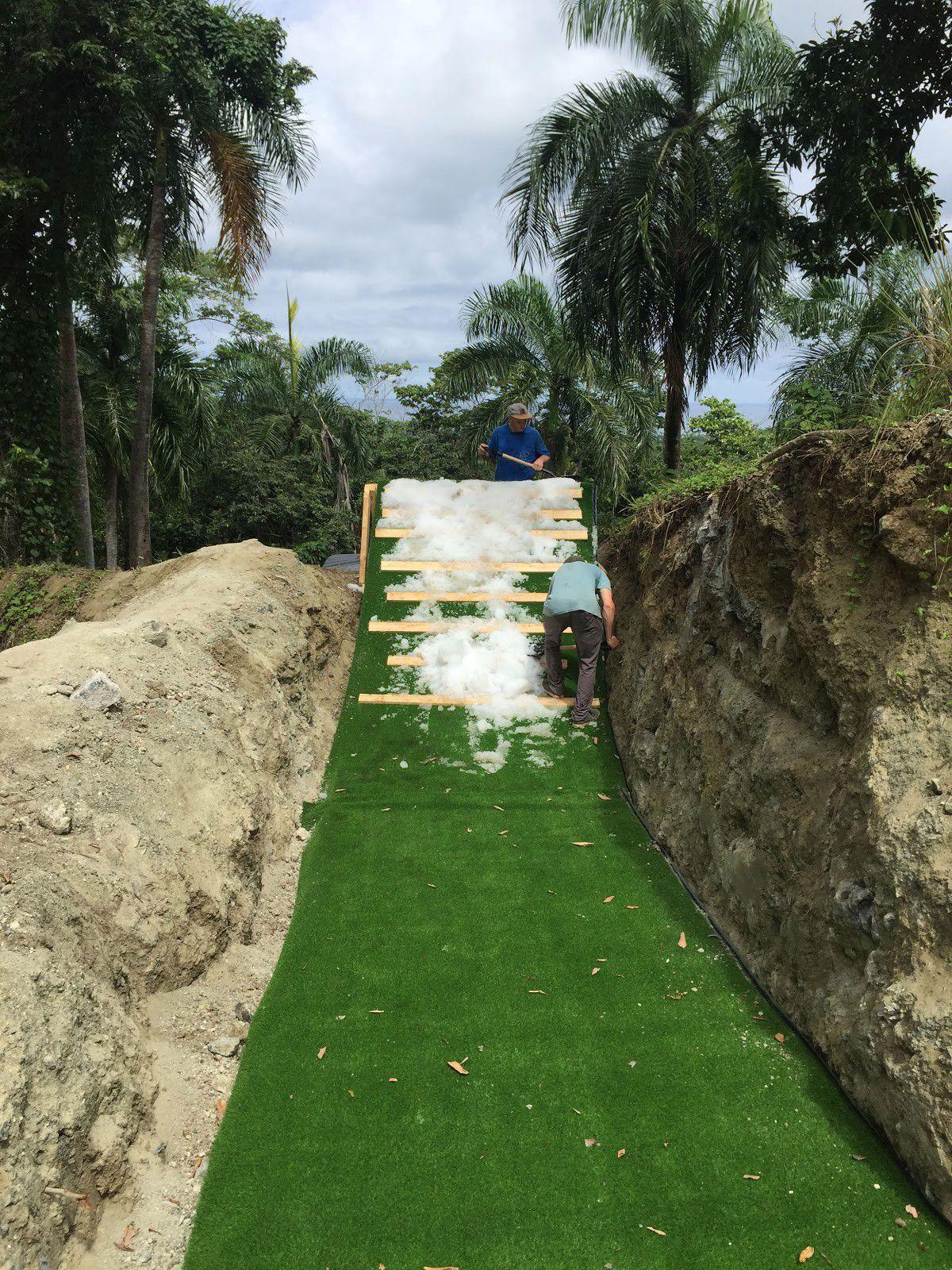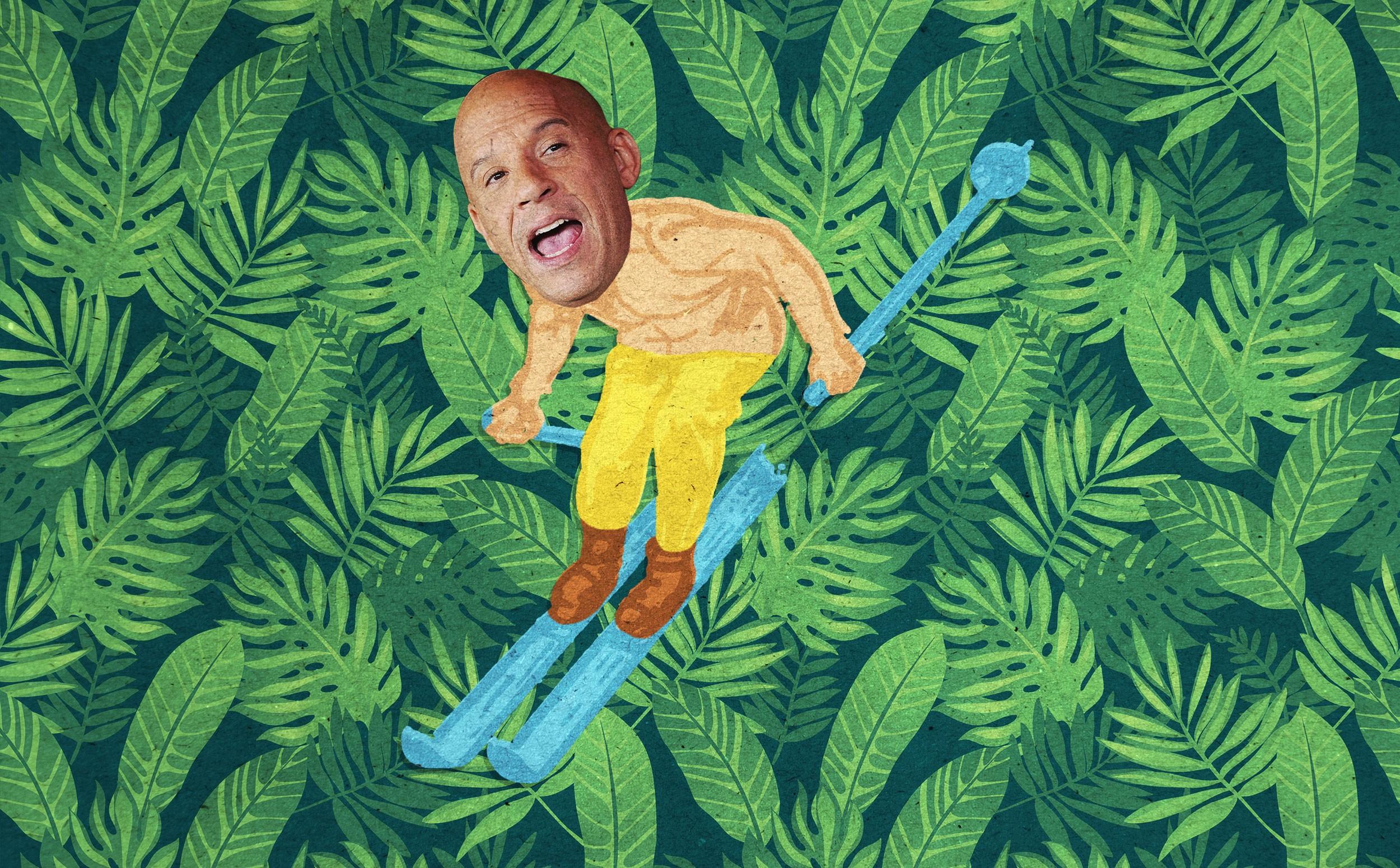A Run Through the Jungle
How three professional skiers and Hollywood novices wound up stunt doubling for Vin Diesel on ‘xXx: Return of Xander Cage’—turning a prolonged and confounding task in the sweltering Dominican Republic into a blip of cinematic blissCody Townsend, a 33-year-old professional big-mountain skier, has camped out in the Norwegian reaches of the Arctic circle during an eclipse, been deposited by helicopter onto secluded tufts of Swiss powder, and amassed more than 10 million YouTube views for his 2014 terror-hurtle down an Alaskan chute called the Crack, which looks less like an alpine slope and more like Mordor’s version of Splash Mountain. He treats the world’s gnarliest terrain like a groomed blue square run. He has an unfathomable knack for launching off a cliff, landing in what looks — for an instant — like a catastrophic jumble of gear and limbs, and then bouncing up and away without missing a beat, the winter-sports version of a guy artfully body-rolling across a car windshield.
He is a respected performer in the hypnotic yet high-energy genre of ski porn, an industry in which POV camera angles are abundant, bodies move in eye-widening ways, and "face shots" serve as code for flying fresh snow. The first time he hit the mountain with fellow professional free skier Elyse Saugstad, he tried to impress her by sailing over a 30-foot precipice. She responded by casually doing the same. They married in 2011, and these days, rather than send holiday cards, they produce, film, and star in home videos of themselves decorating the blank heaps of snow where they have spent and risked so much of their lives.
Townsend and two buddies learned to sew a few years back so they could make performance stretchy-belt prototypes; their resulting business, Arcade Belts Inc., would grow into a brand with a seven-figure revenue. He can often be found tweeting back and forth with ski-nerd venture capitalists like Chris Sacca and Paul Kedrosky. He is godbrothers with Trent Dilfer; both were quarterbacks at the same high school in the California surf town of Santa Cruz, and their dads were each other’s best man. His skiing accomplishments have landed him on Good Morning America and SportsCenter and earned multiple Powder Awards (the ski and snowboard world’s version of the Oscars and/or AVN Awards), including one called "the Full Throttle" that deemed him "the year’s hardest, fastest, strongest ripper."
Which is all to say that there’s not much Townsend finds overwhelming or uncomfortable. But as he stared down a snow-free hillside in a Dominican Republic jungle near the northern coast of Cabarete last March wearing ski boots wrapped in Timberlands-mimicking leather and sweltering inside a tattooed, big-bicep’d, completely unbreathable muscle suit in order to best resemble the Vin Diesel character Xander Cage, Townsend felt something unusual — he felt kinda rattled. "The thing about skiing on dirt," says Townsend, sitting at Dark Horse Coffee Roasters in Truckee, California, a short drive from the Lake Tahoe shore town where he lives, "is that you don’t know when you’re gonna fall. You just, all of a sudden, your skis stop and you’re eating it."

Xander Cage was supposed to be dead. In the 2002 movie xXx, Diesel starred as the extreme athlete turned deep state operative with a proclivity for getting out of jams via Jet Skis, skateboards, and charisma (often while wearing Penny Lane’s coat). The film cost $70 million to make and ultimately grossed $277.4 million worldwide. But Diesel did not sign on to appear in the 2005 sequel xXx: State of the Union, reportedly over issues with the script, and the project instead featured Ice Cube in the lead role and briefly referenced Cage having been killed in Bora Bora.

Now, more than a decade later, the franchise is back with xXx: Return of Xander Cage, which premiered in the U.S. on Friday, had a budget of $85 million, and contains the plot in the title. Like the other xXx movies, this one brims with beautiful women and beyond-belief stunts — that second part is where Townsend and two other pro skiers named LJ Strenio and Sandy Boville got involved. None of them had ever been in a Hollywood film before, but all three can now say they’ve stunt doubled on skis for Diesel.
The first time Cage appears onscreen in the new movie, he is quite the opposite of six feet under, perched high atop a broadcast tower against a hilly green landscape, smirking down at a few angry security guards below. He clicks his Timbs into a pair of skis, jumps off the tower, and plummets hundreds of feet through a jungle canopy and out of view. He hits the ground and skis away, over moss and through vines, dodging roots and jumping between tree trunks, pausing every now and then to bust out what the script calls "Olympic-level tricks." Without spoiling the objective behind this unusual mission, we’ll say that it did lead one Entertainment Weekly reviewer to assess the scene as "preposterous and unnecessary." In the unapologetic and over-the-top xXx universe, though, that’s arguably a compliment.
The jungle-skiing segment lasts for only a minute: a fun, brief lark for the audience. For the various performers, producers, and coordinators who handled the shoot, though, it was the result of more than a month’s worth of blood, sweat, and possibly, secretly, tears. During their time on the set, Townsend, Strenio, and Boville schlepped up Dominican hillsides, hauling bags of dirt or wielding machetes, to help production crews construct safe, if unconventional, sets. They woke up well before dawn in order to make two-hour drives to remote locations for 5:30 a.m. hair and makeup call times. They shaved their heads to look like Cage but never got to meet Diesel. They wore muscle suit costumes that felt like hot, thick wetsuits. "They lube you up with K-Y Jelly to get it on," Strenio says. "Just a cold and awkward feeling."

They tried to avoid veering into nearby fields of dangerously sharp coral. At the end of one run that came to be known as "The Body Chute," they discovered a human skeleton at their feet. And when they had trouble getting the right speed to launch airborne tricks off of Astroturf-covered takeoff ramps, they tested, with mounting frustration, an increasingly desperate assortment of slippery substances that tried and failed to imitate the properties of sweet, sweet snow.
The experience put into context the iterative successes, absurd inefficiencies, and almost inconceivable scope of a big-budget Hollywood operation. Even for three seasoned athletes who ski in front of cameras for a living, the xXx: Return shoot proved to be challenging and illuminating. Strenio says that with every wipeout and each new take, it was hard not to think about how much money he was costing the studio. "I fell a lot," he says. "I ripped the muscle suit."

Hearing stunt coordinator Bob Brown reminisce about shooting xXx: Return is like eavesdropping on an imaginative child at play in an expensive rec room. Skyping from India, where he is at work on a new project, he mentions "water bikes" and "zero gravity" and says, "The whole fight scene with the motorcycles? That was Vin’s idea." Diesel, in addition to starring in the film, is also a producer, and is "completely hands on," Brown says. "Vin always comes up with dope ideas."
(A publicist for Diesel said a busy movie-premiere touring schedule precluded him from commenting for this piece.) But in addition to Diesel’s influential presence, director D.J. Caruso and the rest of his team used a tried-and-true action-film method for ginning up creative inspiration: They researched what extreme athletes were getting up to.
In 1976, James Bond producer Cubby Broccoli’s then-assistant Michael G. Wilson noticed a Canadian Club ad in a magazine featuring climber, skier, and BASE-jumping godfather Rick Sylvester. Wilson made a call, and the following year, The Spy Who Loved Me opened with a scene of Sylvester-as-Bond skiing away from a treacherous alpine cabin, taking down a few spooks, and flying off a cliff before pulling a ripcord to unfurl a Union Jack parachute as the Bond music kicks in.
While working on his film Transformers: Dark of the Moon, Michael Bay caught a 2009 episode of 60 Minutes featuring JT Holmes’s ongoing innovations in human flight and called Steven Spielberg to say that he needed Holmes and his flying-squirrel-like wingsuits in the movie. Holmes scrupulously prepared PowerPoints of preferred locations and led a crew that flew in stunning formation amid the skyscrapers of Chicago. (Everyone stuck their landings perfectly, Holmes says from his snowed-in home near the Squaw Valley ski resort, then interrupts himself. "One guy landed on the roof of a bar — but not, like, in a precarious way.")
Those "water bikes" Brown mentioned? They were in reference to an xXx: Return scene in which Cage surfs an enormous wave while riding a motorcycle, which was inspired by an actual film from motocrosser Robbie Maddison called Pipe Dream where he does exactly that. (Maddison, too, served as a specialty stunt man for the film.) "There’s a lot of out-of-the-box, cool things happening on YouTube," Brown says. The skiing scene was no different. "I found these guys that were skiing in the jungle without snow," director Caruso said in an interview with Empire online. "I’m, like, ‘OK, great. That’s a Xander Cage thing.’"
In 2013, a niche company called Sweetgrass Productions released a ski film called Valhalla that included a dreamlike segment filmed in the forests near Washington’s Mount Baker. Against a verdant and conspicuously snow-free backdrop, skiers somersault through the evergreens, ricochet off old-growth trees, and generally seem to float through the woods like they’re trapped inside a game of Myst. At that year’s Powder Awards, Valhalla was named "Movie of the Year."
"We finished up that shoot and thought, you know, we’ll probably never be jungle-skiing again," says Mike Brown, a director at Sweetgrass. "And then out of nowhere, we got this call from Paramount. They had seen our segments online."

Putting together the stunt and special effects teams for movies is a bit like renovating a house: A contractor can take care of a lot with his generalist staff, just as a stunt coordinator can use full-time, dedicated industry professionals for everything from jumping between buildings to staging in a car chase. But if a homeowner wants certain materials or installations — jungle-skiing, motorcycle-surfing — he or she is smart to involve a subcontractor with more specialized experience. In this case, Sweetgrass’s mandate included recruiting capable performers, scouting suitable slopes and lines for the shoot, and even performing a good deal of the eventual camera work once filming began.
In Townsend, Strenio, and Boville, the production team found three successful, inventive skiers with complementary skill sets. Townsend is a fast and fearless athlete and an expert at sussing out skiable lines and bombing down long runs. Strenio, a 27-year-old "urban skier" who grew up in Vermont, made a name for himself with popular videos of sliding down bannisters and hitting big, ambitious jumps. "I love urban skiing," he wrote on Facebook, "because there’s always these unknown factors that make things sketchier that you just can’t convey on film." Boville, a 26-year-old from Ontario who’s also an urban skier, won the "Breakthrough Performer" Powder Award in 2013 and, a few days ago, earned a shout-out from Diesel on Jimmy Kimmel Live!. "Sandy is really what we call ‘jibby,’" Townsend says. "He’s just really good at, like, weird features." There would be plenty of those to choose from on set.

A few weeks after agreeing to participate but before leaving for the Dominican Republic, Townsend checked his email. "We got an email, like a one-line email, from the stunt director, like, Sorry, shoot’s off, no more skiing," Townsend recalls. "And I think I missed the email, because I got another email the next day being like, No, it’s back on, we’re good. I saw them in reverse order and was like, what?"
As Townsend later heard it, the scene had almost been scrapped for budget reasons ("Oh yeah," Bob Brown says. "The budget was all over.") until Diesel stepped in. "They were trying to slash things out, but he was like, No, I want that scene," Townsend says. "So he saved the scene."

"That scene" involved filming what Townsend estimates to be a dozen distinct stunts: from a tree stall, in which a mid-air skier pivots off a tree; to a "cork 7," a twirling, flipping aerial maneuver; to a number of various long, harrowing downhill runs over unpredictable terrain. (All three skiers played Diesel; their various attempts at the disparate stunts were eventually spliced together into one coherent scene.) One portion — Cage’s initial jump through the trees from the broadcasting tower — was probably the most traditional movie stunt of them all, which meant that it involved a crane, a rope cable, and a harness vest so tight it was hard to fully breathe while wearing it. Getting hoisted hundreds of feet in the air for that shot meant ceding control to machines, a difficult task for a group of guys who have spent their lives pushing against their own human limitations.
"There’s this guy that developed a computer system that does all this stuff for Cirque du Soleil," Townsend says. "They drop you just a hair short of free fall, and within 4 feet of the ground you’re still going full speed. … And it was such a crazy mind thing to get through. You’re getting dropped from 150 feet at full speed and the ground is coming up and you’re like, I’mgonnadieI’mgonnadieI’mgonnadie, like, aaauuughhhh, and then you have to act like you’re skiing and falling and landing as Vin Diesel. I did it probably 10 times."
But other elements were so foreign to the standard stunt-world operating procedure that issues began to crop up. As Townsend and Strenio understood it, the xXx: Return filmmakers wanted two things — shots of skis sliding over real dirt and footage of cool airborne stunts. The first was doable, if humbling: Unlike on snowy terrain, when Townsend’s nerves would fade after his first attempt, the variable jungle conditions made him uncharacteristically nervous every time he attempted a run. The second almost turned into a white whale. Valhalla, the inspiration for the xXx: Return scene, had been constructed, shot, and edited in a way that obscured the realities of how it was made. Viewers saw guys backflipping through the forest like weightless Tarzans, but not the snowy in-run ramps they were launching from in order to generate enough momentum and spin for those maneuvers. Absent snow, the production crew in the Dominican Republic figured they would be able to approximate those conditions closely enough using alternate materials, but that would turn out to be much more difficult than they expected.
A contingent from Sweetgrass went down to the Dominican Republic in early February to scout out locations and start building the sets. Strenio soon joined for early testing purposes. When Townsend arrived about three weeks later, he figured things would be mostly ready, and that maybe he’d spend a few days rehearsing and testing features and a few days on the shoot — a week, max. It was tough to tear himself away from actual snow-covered mountains in the middle of prime ski season, but he had resolved not to enable his FOMO by checking the out-of-town weather. He was trying out a new skiing philosophy — one in which he wanted to chase experiences, not just powder days.
When Townsend arrived, he tried out the latest launch setup: a computerized winch system rigged to tow him, waterskier style, up a narrow Astroturf-covered ramp so he could get sufficient air. It did not go well. "I ended up with so much friction building up over the skis that I just got ejected," he says, "and dragged along a dirt roadway at, like, 35 miles per hour. I tore up my chest, my arm. That was my day one."

In the days that followed, stunt crews tried slicking the Astroturf with baby oil, castor oil, motor oil — none of it worked. They tried with water and without. Silicon beads didn’t work, says Todd Schneider, a stuntman and stunt coordinator who arrived on set right around when Townsend did. A former ski racer on the U.S. national team, Schneider had the advantage of speaking the language of both the Hollywood stunt wonks and the skier performers; he became a crucial liaison between them. "Liquid dish soap!" Schneider says, remembering another experimental substance.
"The dish soap was actually one of the best," Townsend says. "That was the closest we got. Then there were these balls of water jelly, the kind they plant around for agricultural uses. They’re weird-feeling and kind of toxic. They ended up being like suction. They completely stopped you." It was a grueling few days filled with painful crashes on unforgiving terrain. Everything dragged behind schedule. The skiers came to jokingly characterize their role on the set as "monkeys in a cannon."

"I think it happens with lots of things in life," says Strenio, "where things that impress you seem so calculated and so figured out and so professional. To see mayhem and problem-solving and figuring stuff out — all that mess that’s involved in making these productions — and know that this really professional Hollywood movie is going to come out of it, that was the most surprising thing for me." The skiers were no strangers to MacGyvering oddball solutions here and there, or to making the best of crappy conditions, but there wasn’t much they could do in the middle of the jungle to solve Astroturf’s viscosity problem.

"Bringing real snow in there would never have been my first instinct," Bob Brown says; like many other longtime stunt coordinators, he has made a lot of magic over the years with winches-and-Astroturf solutions and is confident in their efficacy. But the heavy winch machines were starting to get stuck in the mud. There was still no good solution for takeoff. Schneider began to feel increasingly strongly that in order to set the performers up to succeed — to get the right speed and the right feel, to place them momentarily back in their natural habitat — there needed to be small amounts of actual snow. The bad news was that there were no snowmaking machines to be immediately procured in the Dominican Republic jungle. The good news was that there were woodchippers.
There’s no agreement on who specifically brought up the idea of putting ice through a woodchipper, but it was not an initial success. There were no bulk-sized shipments of ice available, so a refrigerated truck bearing hundreds of 20-pound bags arrived. The first three bags completely jammed up the machine. And even once it finally yielded ice chips, they shot out uselessly every which way. A crew member had to handcraft a wooden chute to funnel the ice into garbage cans. Crew members and skiers alike rushed the chipped ice uphill in wheelbarrows, laying down thin layers of "snow" on the in-runs and rushing to ski over it before it melted. It was as ridiculous as it was arduous, but it finally worked.
With the snow substitution issue finally behind them, everyone began rehearsing the many components that would go into the overall scene. Townsend described one path through the trees that he termed "The Root Chute": "Going down, making a turn, making another turn, airing through this little gnarly chute — like a 10-foot air — landing, and then straight-lining and hitting like, a 5-foot cliff, but you end up going 30 feet, and then landing on dirt, and then all there was below that was a coral field, so we had to put up these big pads and just hit the pads."
Townsend was ultimately in the Dominican Republic for two weeks; guys like Mike Brown were there for more than a month. The actual shoot, during which the skiers had to wear the oppressive muscle suits and repeatedly trudge up hills so they could ski right back down, lasted for two long, grueling days. (According to Sweetgrass’s Mike Brown, the number of people on set ballooned during those days to as many as 300 people, turning it into a bustling village of union reps and stunt coordinators and catering managers and the people in charge of fiddling with each leaf and twig until it lay just so.) In the film, the jungle-skiing scene lasts juuuust long enough to cause a moviegoer to briefly wonder exactly why, let alone how, Xander Cage is skiing through a jungle — before they are distracted by his next trick (longboard skateboarding off the side of a bus, obviously.)

In his interview with The Hollywood Reporter from 2015, Wilson, the producer of recent James Bond films who first noticed Sylvester’s Canadian Club ad back in the ’70s, remarked that the ski stunt in The Spy Who Loved Me is "considered to be the best stunt in the Bond series." Regardless of its subjective ranking, the scene is objectively a triumph of special effects — in large part because so much of it didn’t really require any. (The fakest parts of the sequence are the hokey green-screen shots spliced in of Sir Roger Moore in tuck position.) Commanding and memorable, it’s a best-case scenario for the way a well-conceived and well-shot action scene can do more than momentarily amaze, but elevate a film in a lasting and memorable way.
Townsend has seen the movie many times — "Elyse and I own the entire Bond collection," he says — and he sometimes sees Sylvester, a Tahoe local, at the gym. He is also close friends with Holmes, and speaks highly of his work in Transformers: Dark of the Moon, which he points out was more than an everyday stunt. "Those guys were doing some of the hardest BASE-jumping ever done," he says. "It will probably never be repeated, either." (Holmes enjoyed the creative experience so much that he has done stunt coordination work on a number of movies since.)
The skiers say they watch movies differently now, even ones that aren’t categorized as action. "In that office-party movie," Townsend says, referring to the 2016 seasonal comedy Office Christmas Party, "there’s a scene where a guy falls from the rafters and then slams onto a bookshelf." He winces. "And I now know that was real: A body fell and hit that bookshelf and slammed backwards. You watch and everyone’s laughing and you’re, like, ‘Nooo, that guy got hurt!’" Strenio describes Point Break as "not crazy-crazy stunt intensive" and then stops: "Actually, you know what? It was super stunt-intensive!"
It’s no surprise that the three skiers got along well with the stunt-guy lifers they encountered on the set. They chatted with them about what famous actors they liked working with most. (Keanu Reeves and Tom Cruise were two frequent answers.) They learned quickly that the crash pads of choice in the industry — piles of empty cardboard boxes — were surprisingly soft. And they shared a mutual understanding for what it’s like to work in fields that — to outsiders — seem populated by reckless Evel Knievels but are actually filled with thoughtful, safety-obsessed, hardworking people who are more aware than just about anyone about the inherent dangers in their profession.
During the 2002 xXx filming, a Navy SEAL–turned–stuntman named Harry O’Connor was killed during a parasailing stunt. And anyone in the freestyle ski world has not only known someone who was killed on the mountain, but has likely had close calls themselves. Both Saugstad and Holmes have each survived being buried by an avalanche when friends and rescuers dug them out; both Saugstad and Townsend now give avalanche safety lectures. But they keep free skiing because it’s their lifeblood: pushing the boundaries of what is humanly possible, in art or in life.
In addition to his urban skiing, Boville is starting to dabble in more of the big mountain stuff that Townsend is famous for. Townsend, meanwhile, has turned his focus to long, expedition-style journeys; he’s currently in India to trek around and ski the southern Himalayas. Strenio will compete in the upcoming X Games in a video-based discipline called Real Ski in which he is tasked with making the raddest short compilation film of his tricks that he can. He jokes that he’d win handily if he could include the Xander Cage footage.
They were all invited to attend the xXx: Return premiere in Los Angeles last week: a wild, pinch-yourself life experience to be sure, albeit not quite as surreal as the actual movie shoot last year was. "A few times I was doing backflips," Townsend says, recalling his time in the Dominican Republic, "just upside down, looking out at the ocean through the jungle, and being like: ‘This is so strange. Where are we?’"


